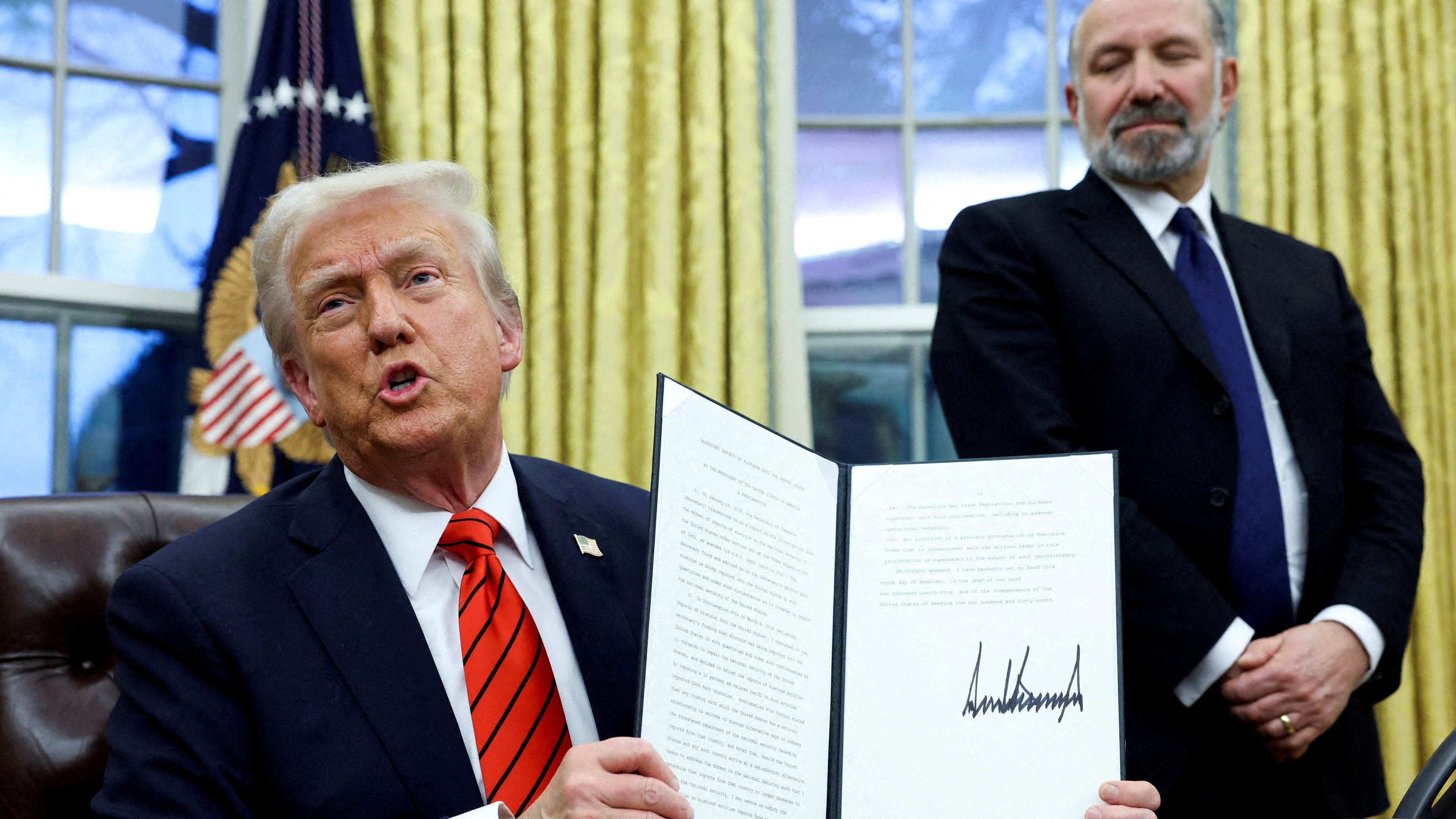Did Trump's Tariffs Help US Manufacturers? An Analysis

Table of Contents
The Intended Effects of Trump's Tariffs on US Manufacturing
The stated goals of Trump's tariffs on US manufacturers were threefold: to protect domestic industries from foreign competition, to boost American jobs in the manufacturing sector, and to reduce the US trade deficit. These tariffs targeted specific sectors deemed crucial to the American economy, including steel, aluminum, and solar panels. The administration hoped that these measures would achieve the following:
- Increased domestic production: By making imported goods more expensive, the theory was that domestic manufacturers would become more competitive and increase their output.
- Job creation in targeted industries: Increased domestic production was expected to lead to a rise in employment within the affected sectors.
- Reduced reliance on foreign goods: The tariffs aimed to lessen America's dependence on foreign manufacturers, promoting self-sufficiency.
The Actual Economic Impact of Trump's Tariffs on US Manufacturers
The economic data surrounding the impact of Trump's tariffs on US manufacturers paints a more nuanced picture. While some sectors experienced short-term gains, others faced significant challenges. Analyzing changes in production, employment, and investment reveals a complex reality:
- Changes in production levels before and after tariff implementation: While some sectors saw a slight uptick in production, overall manufacturing output growth wasn't significantly boosted. The increased cost of imported inputs often offset any gains from reduced foreign competition.
- Job growth or loss in specific manufacturing sectors: Job growth in the targeted sectors was less pronounced than predicted, and some sectors experienced job losses due to reduced competitiveness and retaliatory tariffs.
- Impact on investment in US manufacturing facilities: Uncertainty surrounding the tariffs and the retaliatory measures from trading partners led to decreased investment in many manufacturing facilities.
- Analysis of price increases for consumers due to tariffs: Consumers faced higher prices on a range of goods, ultimately dampening consumer spending and potentially slowing overall economic growth. This is a key unintended consequence often overlooked in discussions of tariffs' benefits.
Winners and Losers: Examining the Differential Impact of Tariffs
The effects of Trump's tariffs on US manufacturers weren't uniform. Some sectors benefited from increased protection, while others suffered due to higher input costs and reduced competitiveness. The impact was often tied to industry size, global competitiveness, and supply chain integration:
- Industries that benefited from increased protection: Some smaller, less globally competitive industries, possibly in niche markets, might have experienced short-term benefits from reduced competition.
- Industries that suffered due to increased input costs: Industries heavily reliant on imported raw materials or components experienced significant cost increases, leading to reduced profitability and competitiveness. This particularly affected industries with complex global supply chains.
- The impact of tariffs on small vs. large manufacturers: Larger manufacturers with more resources were often better able to navigate the challenges posed by tariffs than smaller businesses with limited resources and market share.
Long-Term Implications and Lessons Learned from Trump's Tariffs
The long-term effects of Trump's tariffs on the competitiveness of US manufacturing are still unfolding. However, several key takeaways emerge concerning US trade policy and international relations:
- Changes in global trade relationships: The tariffs strained relationships with key trading partners, leading to retaliatory measures and increased trade tensions.
- Impact on US competitiveness in the global market: The increased costs and uncertainty associated with the tariffs arguably reduced the long-term competitiveness of certain US manufacturing sectors.
- Lessons learned for future trade policy: The experience highlighted the complexities of trade policy and the importance of considering both intended and unintended consequences before implementing protectionist measures. A more nuanced, targeted approach might be more effective than broad-based tariffs.
Conclusion: The Lasting Effects of Trump's Tariffs on US Manufacturers
In conclusion, the impact of Trump's tariffs on US manufacturers was complex and far from uniform. While some sectors experienced short-term gains, the overall economic impact appears to have been negative for many manufacturers and consumers alike. The unintended consequences, such as higher prices and retaliatory tariffs, often outweighed any purported benefits. The experience underscores the complexities of trade policy and the need for careful consideration of all potential outcomes before implementing broad-based protectionist measures. Continue the conversation: Did Trump's tariffs on US manufacturers achieve their intended goals? Share your thoughts in the comments below!

Featured Posts
-
 Jeff Goldblum And Emilie Livingston Take Sons To Como 1907 Vs Torino Match
May 06, 2025
Jeff Goldblum And Emilie Livingston Take Sons To Como 1907 Vs Torino Match
May 06, 2025 -
 The 2025 Met Gala Confirmed Celebrity Appearances
May 06, 2025
The 2025 Met Gala Confirmed Celebrity Appearances
May 06, 2025 -
 Unexpected Snl Guest Sabrina Carpenter And A Fun Size Friend
May 06, 2025
Unexpected Snl Guest Sabrina Carpenter And A Fun Size Friend
May 06, 2025 -
 Povernennya Stivena Kinga V X Kritika Trampa Ta Maska
May 06, 2025
Povernennya Stivena Kinga V X Kritika Trampa Ta Maska
May 06, 2025 -
 The Challenges Priyanka Chopra Faced Insights From Her Mother Madhu Chopra
May 06, 2025
The Challenges Priyanka Chopra Faced Insights From Her Mother Madhu Chopra
May 06, 2025
